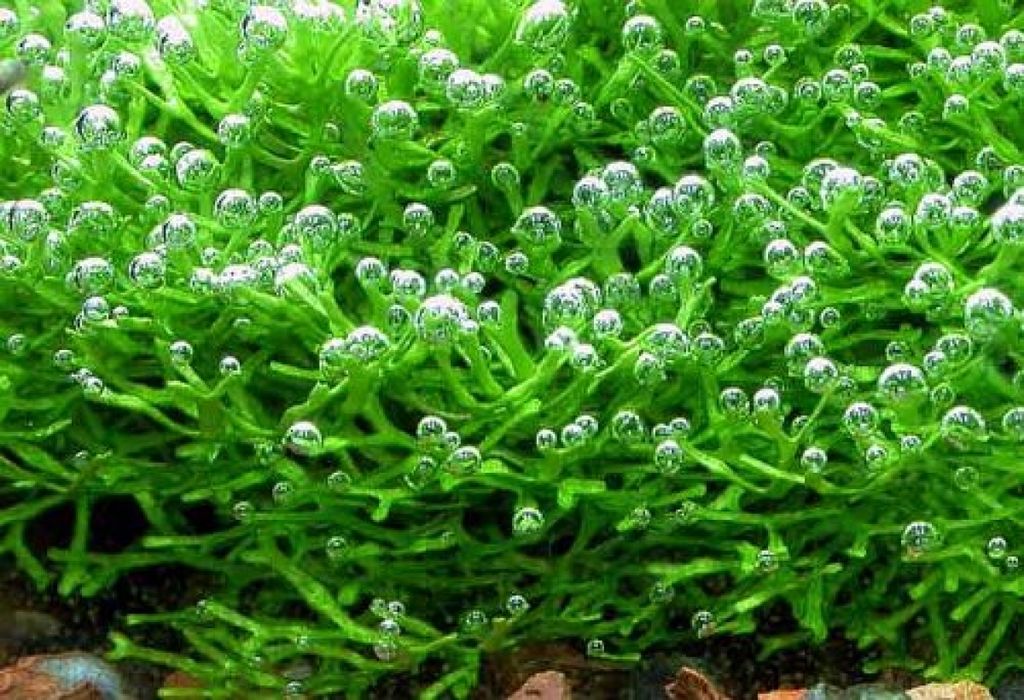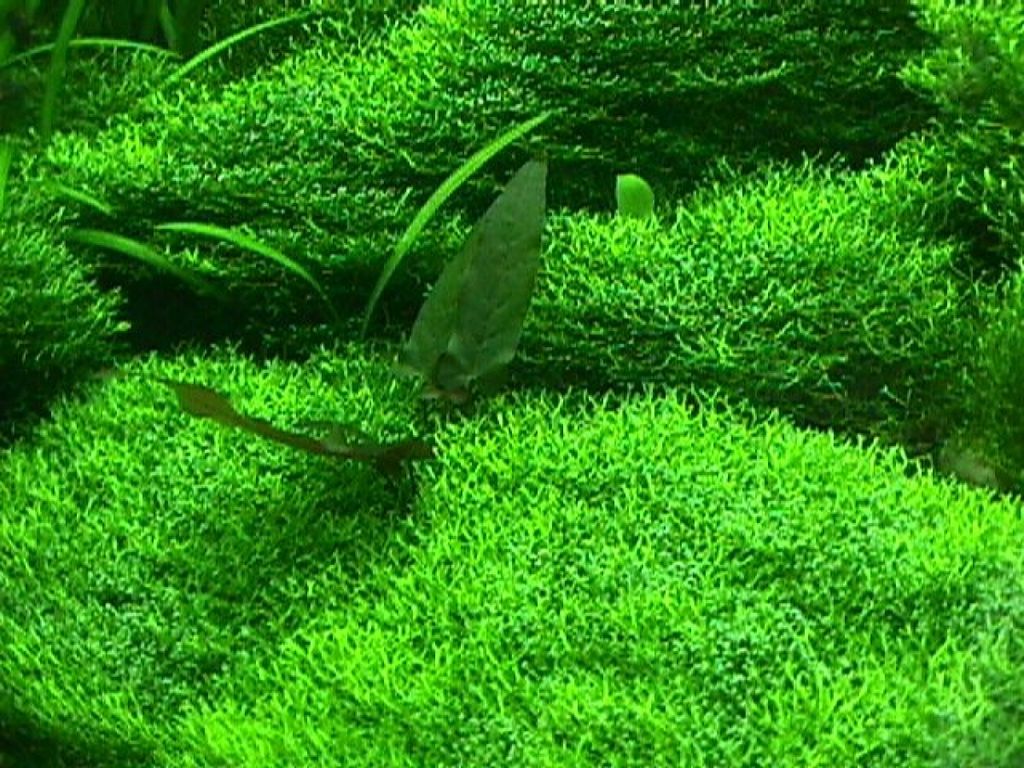

Hardiness: Easy
Light Needs: Medium
Plant Structure: Floating
Family: Ricciaceae
Genus: Riccia
Region: Cosmopolitan
Location: Cosmopolitan
Size: Infinite
Growth Rate: Fast
Can Be Grown Emersed: Yes
Riccia fluitans, or crystalwort, is a floating bladderwort which can be found all over the world. First cataloged by Linnaeus in 1753, Riccia did not become popular as an aquarium plant until Takashi Amano began using the plant as an epiphyte tied to driftwood or rocks. Riccia has fast become an aquarium favorite and is available through all of the major nurseries and larger aquatic plant suppliers.It should be noted that there are at least four varieties of Riccia fluitans -- Japan, Europe, Thailand, and Singapore but only the Japanese variety is suitable for submersed growth.
Riccia fluitans is actually a very easy plant to grow. Riccia's widespread distribution is due in part to its ability to tolerate a very wide range of environments, from medium soft to very hard water, pH ranges from 6.0-8.0 and temps from 15-30 degrees Celsius. As a floating plant, moderate lighting is sufficient for good growth and CO2 injection is unnecessary. Its requirements for light(3+wpg) and CO2(30ppm) are high when grown attached to objects in the aquarium. It also appreciates rich fertilization through the water column, including nitrate, phosphate, potassium, and iron.
When left floating, Riccia will rapidly expand in size as an amorphous mass. In this state, the pruning of Riccia is very straight forward �simply remove unwanted amounts from your tank. However, the most popular use of this plant is to grow it attached to rocks or driftwood. To grow Riccia this way, use a hair net and collect a wad of this liverwort under it. Afterwards, take this Riccia filled hair net and wrap around a piece of driftwood or rock. Alternatively, Riccia can also be used as a foreground carpet if the hair nets are weighed down with small stones. When grown this way, this liverwort will require frequent trimming with a pair of scissors since it grows very rapidly and dead areas could form if not enough light is penetrating the mass �which would tend to cause the healthy new growth to detach itself and float.




